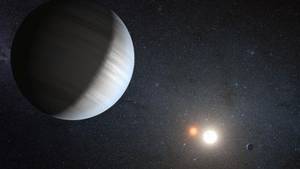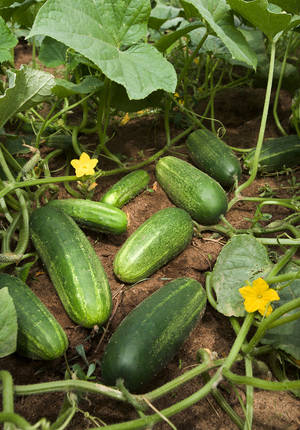Multiple- resistant TB, Methane under the Antarctic and Curling Cucumbers.
Interview with
Increasing TB drug resistance
Tuberculosis strains that are resistant to more than one of the main drugs used to treat TB now make up 44% of all TB infections.
The study, published in
The Lancet, found that resistances to specific drugs varied by region and country. Risk factors for developing multiple drug resistant TB, or MDR TB, also varied widely between countries.
Tracy Dalton and her colleagues at the Center for Disease Control and Prevention in Atlanta highlight the need for policies to take account of this data to effectively tackle the spread of MDR TB.
Tracy: - Country specific results can be used to guide in-country policies for laboratory capacity and for designing effective treatment regimens for MDR TB. It also accentuates the need to accelerate progress to prevent further spread of this disease, the need for new drugs in the pipeline, as well as better diagnostics for TB.
---
Methane reservoirs trapped beneath Antarctic ice sheets
Large reservoirs of methane are thought to be trapped beneath the Antarctic Ice Sheet, according to research published in
Nature. The ice sheet covers the remains of ancient wetlands and forests that were present in Antarctica millions of years ago. Microorganisms under the ice break down this organic matter to produce methane in a process called methanogenesis.
The Antarctic Ice Sheet is thinning due to warmer summers and warmer ocean currents. Further melting is likely to release the methane reservoirs into the atmosphere. As methane is a potent greenhouse gas, this would further accelerate climate change.
Jemma Wadham and her team at the University of Bristol analysed the potential for methanogenesis under the Antarctic ice sheet by comparing it with other well-studied subglacial environments.
Jemma - So I guess if you think about whether there's methane beneath in the Antarctic Ice Sheets, in many ways, it seems quite logical. We've got lots of liquid water. We've got microbes. We've got organic carbon from the ice sheet over various forests, in tundra, and marine sediments, which were there before, and we've got real lot of oxygen. So, those are the perfect ingredients for methanogenesis. So, experiments really showed that that was the case. Now, we did use a computer model and we actually show that over the millions of years the Antarctic Ice Sheets been there, you can actually build up quite large stores of methane gas beneath the ice sheets. If those stores were say, in marginal locations, this potentially is going to be released back to the atmosphere. And the form the methane's in is in fact methane hydrate, which is very sensitive to pressure and therefore ice thicknesses, so glacier retreat, ice thinning could result in that hydrate dissociating to gas and being released to the atmosphere.
---
 Kepler 47:
Kepler 47:
A new kind of solar system has been discovered by scientists at San Diego State University. Kepler 47 consists of two stars orbiting one another, known as a binary star, with two planets in orbit around them.
This arrangement of two stars with two orbiting planets, called a circumbinary system, was previously thought to be too unstable to form and persist for long periods.
Now Jerome Oroszy's research, published in the journal
Science, indicates that similar systems are likely to be relatively common.
Jerome: - Around the binary star system, we actually found two planets on close circumbinary orbits. Now, the binary star has an orbital period of about 7 ½ days and the two planets have periods of 49 ½ days and 303 days. And so, this is very surprising to us because before the Kepler mission, it was not clear that binary systems could form planets at such close circumbinary orbits. And so, the Kepler 47 shows this, that in fact, it does happen, and in fact, systems like this could be quite common.
---
 How cucumber tendrils twist
How cucumber tendrils twist
And finally, the curly tendrils of the cucumber plant have been posing a problem for scientists since before Darwin's time.
Tendril twistability helps the cucumber plant bind to nearby twigs and branches to support itself against wind and passing animals. Exactly how tendrils manage to curl and grip on to these supports has been unclear until now.
Research published in the journal
Science shows how the tendrils, which consist of helices spiralling in opposite directions, manage to twist under tension.
Physicist Sharon Gerbode explained how her interdisciplinary team at Harvey Mudd College in California got some surprising results.
Sharon - We set out to understand how cucumber tendrils coil, but along the way, we discovered something really unusual. So, if you just go into your backyard and grab a young, moist, green cucumber tendril and pull it, the two helices that it's made of will simply unwind into this straight tendril. But if you grab an old mature tendril, when that has dried out and pull it, you'll find something very unusual. You'll see that instead of unwinding, it winds even further. To try to understand this unusual overwinding, we created rubber models out of stretched silicon rubber, combined with silicon caulk, like you would use to seal your bathtub. We were able to finally introduce this overwinding behaviour by adding a fabric ribbon, like something you would wear in your hair to the inside of the helices and a stiff copper wire to the exterior. And together, this creates certain material properties that make it very difficult to bend, but easy to twist.










Comments
Add a comment